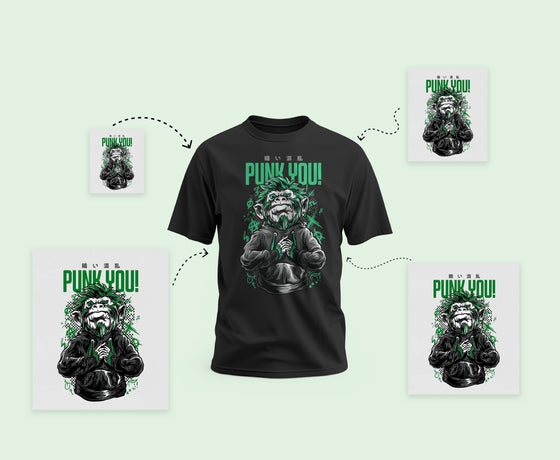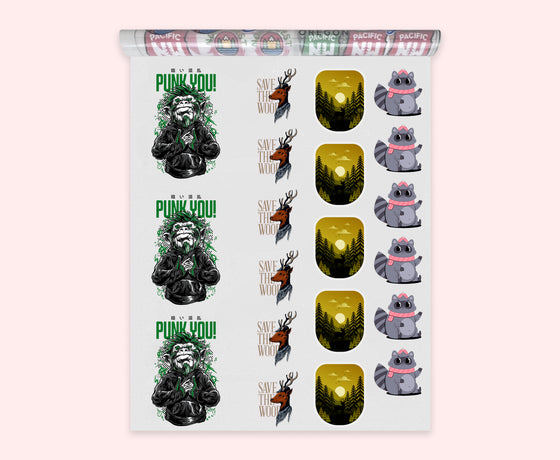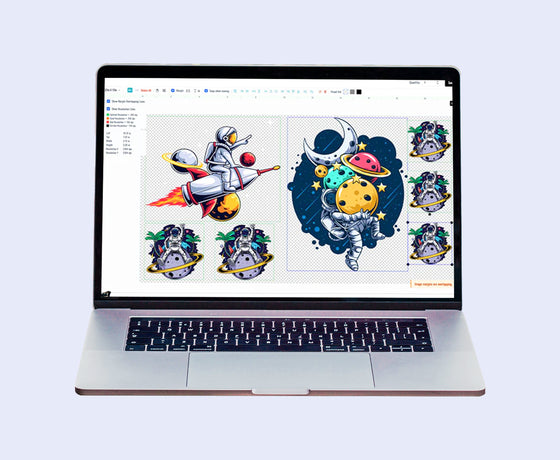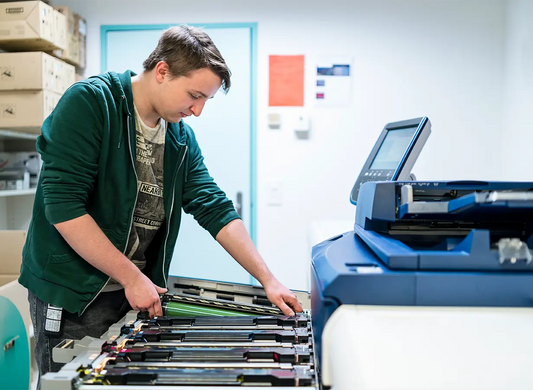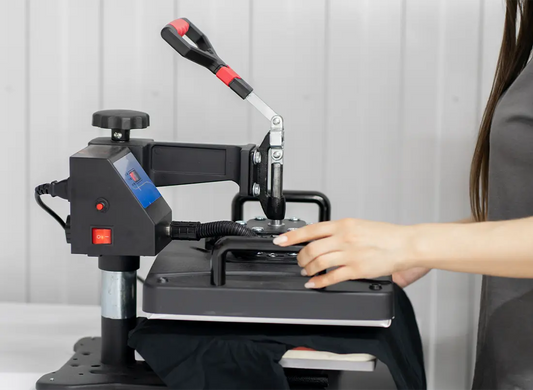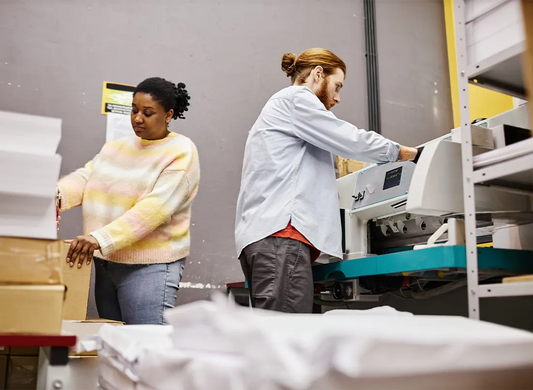What is DTF Transfer?
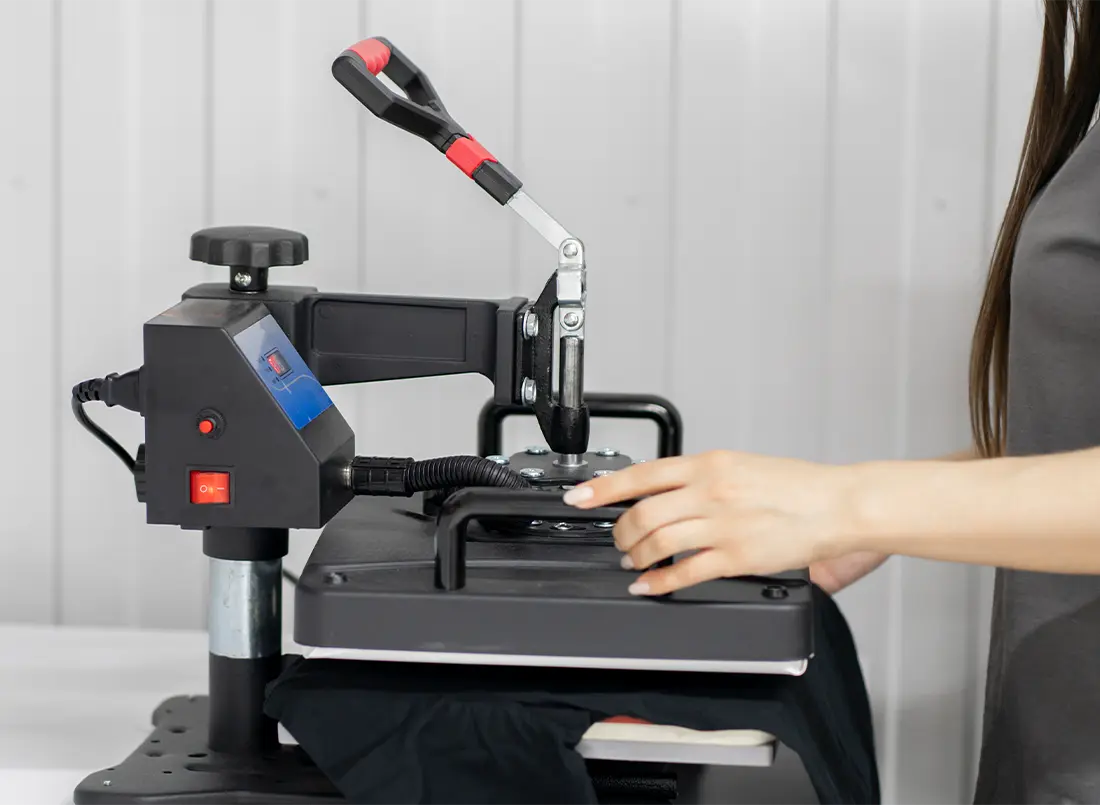
What is DTF Transfer? DTF stands for "Direct to Film"—a printing technology that allows you to print a design onto a special film and then transfer it onto a textile using a heat press. The process has revolutionized custom apparel and merchandise printing, offering versatility and durability without the limitations of older techniques.
Unlike traditional methods such as screen printing or direct-to-garment (DTG), DTF printing doesn't require pretreatment of fabrics and works on a wider range of materials, including cotton, polyester, and blends. This makes DTF one of the most flexible and cost-effective printing technologies available today.

How Does DTF Transfer Work?
DTF printing may sound complex, but it's actually a fairly straightforward process that includes these essential steps:
Step-by-Step DTF Process:
-
Design Preparation: Use design software like Photoshop or Illustrator to create a print-ready design.
-
Printing on PET Film: Print the design on a specialized PET film using a DTF-compatible printer and DTF inks.
-
Powder Adhesive Application: While the ink is still wet, apply a layer of hot melt adhesive powder to the film.
-
Curing the Film: Cure the powdered film using a curing oven or heat press at a set temperature.
-
Heat Transfer: Place the cured film onto the fabric and use a heat press to apply pressure and heat.
-
Cold Peel: Once cooled, peel off the film to reveal the transferred design.
Each stage of the process requires precision. Quality equipment and materials are key for vibrant, long-lasting prints.
Key Components of the DTF Process
Several critical materials and devices are necessary for successful DTF printing:
Essential Materials:
-
PET Film: Polyester film specifically designed to handle DTF inks and adhesives.
-
DTF Ink: Water-based pigment inks optimized for fabric transfer.
-
Hot Melt Powder: Thermoplastic adhesive powder used to bond ink to the fabric.
Equipment Required:
-
DTF Printer: A modified inkjet printer capable of using DTF ink.
-
Curing Oven or Heat Press: Used to melt adhesive powder and apply designs.
Without quality materials, you risk blurry prints, poor adhesion, or cracking.
DTF Transfer vs Other Printing Methods
DTF Transfer is often compared to other popular printing technologies. Here’s a breakdown of how it stacks up:
| Method | Fabric Compatibility | Color Vibrancy | Cost Efficiency | Wash Durability |
|---|---|---|---|---|
| DTF Transfer | Cotton, Polyester, Blends | High | Moderate | High |
| DTG | Mostly Cotton | Very High | Expensive | Moderate |
| Screen Printing | Cotton, Polyester | Medium | Costly for small batches | Very High |
| Sublimation | Polyester Only | Very High | High | High |
DTF is ideal for small and large batch printing with minimal material limitations.
Benefits of Using DTF Transfer
significant advantages:
Advantages:
-
Versatility: Works on light and dark fabrics, cotton, polyester, and more.
-
No Pretreatment: Unlike DTG, there is no need for fabric pretreatment.
-
Cost-Effective for Small Runs: Perfect for short orders and custom prints.
-
Sharp Details: Fine lines and complex designs transfer beautifully.
-
Wash Durability: Long-lasting prints that withstand repeated washing.
DTF combines the best features of DTG and screen printing while eliminating their downsides.
Common Applications of DTF Transfer
DTF printing is used in various industries due to its flexibility. Here are the top applications:
Real-World Use Cases:
-
Custom T-Shirts: Ideal for online apparel brands and print-on-demand services.
-
Team Uniforms: Durable prints perfect for sports teams.
-
Bags & Accessories: Suitable for canvas bags, hats, and more.
-
Promotional Items: Great for branded merchandise and giveaways.
-
Pet Apparel: A growing market for customized pet clothing.
Best Fabrics for DTF Printing
DTF technology works with a wide range of fabrics, but some offer better results:
Recommended Fabrics:
-
100% Cotton: Excellent color hold and softness.
-
Polyester: Works well with vibrant designs.
-
Blends: Cotton-poly blends retain color and shape.
-
Canvas: Good for tote bags and art pieces.
Avoid overly textured or heat-sensitive materials for best results.
How to Maintain and Cure DTF Prints
Maintaining DTF prints is crucial for longevity and customer satisfaction:
Tips for Longevity:
-
Proper Curing: Always cure film at 160–170°C (320–338°F) for 2–3 minutes.
-
Avoid Overheating: Excessive heat may cause discoloration.
-
Cold Peel: Let the film cool completely before peeling.
-
Washing Guidelines: Wash inside-out, cold water, gentle cycle, avoid bleach.
Following these practices ensures your prints look new even after 50+ washes.
DTF Printing Cost Breakdown
Understanding the cost structure helps businesses budget better:
| Cost Component | Estimated Price (USD) |
| PET Film (per sheet) | $0.50–$1.00 |
| DTF Ink (per design) | $0.20–$0.50 |
| Powder Adhesive | $0.10–$0.30 |
| Energy & Labor | $0.50–$1.00 |
| Total Per Print | $1.30–$2.80 |
Cost efficiency improves significantly with bulk orders and optimized workflow.
FAQs About DTF Transfer
What is the lifespan of DTF prints?
DTF prints can last over 50 washes with proper care, maintaining color and elasticity.
Can I use DTF transfer on any fabric?
Yes, but results are best on cotton, polyester, and cotton-blend fabrics.
Do I need a special printer for DTF?
Yes, a modified inkjet printer that supports DTF ink and software is required.
Is DTF better than screen printing?
For small orders and detailed designs, DTF is often more efficient and versatile.
Can DTF be used at home?
Yes, with the right setup and safety precautions, DTF can be operated in home workshops.
Final Thoughts: Should You Choose DTF Transfer?
DTF Transfer has changed the way businesses and creators approach textile printing. Whether you're launching a print-on-demand t-shirt line or adding custom merchandise to your existing store, DTF offers unmatched flexibility, ease of use, and vibrant results.
Why Choose DTF?
-
No design limitations
-
Works on any color fabric
-
Ideal for beginners and pros
Additional Resources
Ready to take your custom apparel business to the next level? Contact us today and get high-quality prints with unmatched ease. Reach out to our team to learn more about us now!

